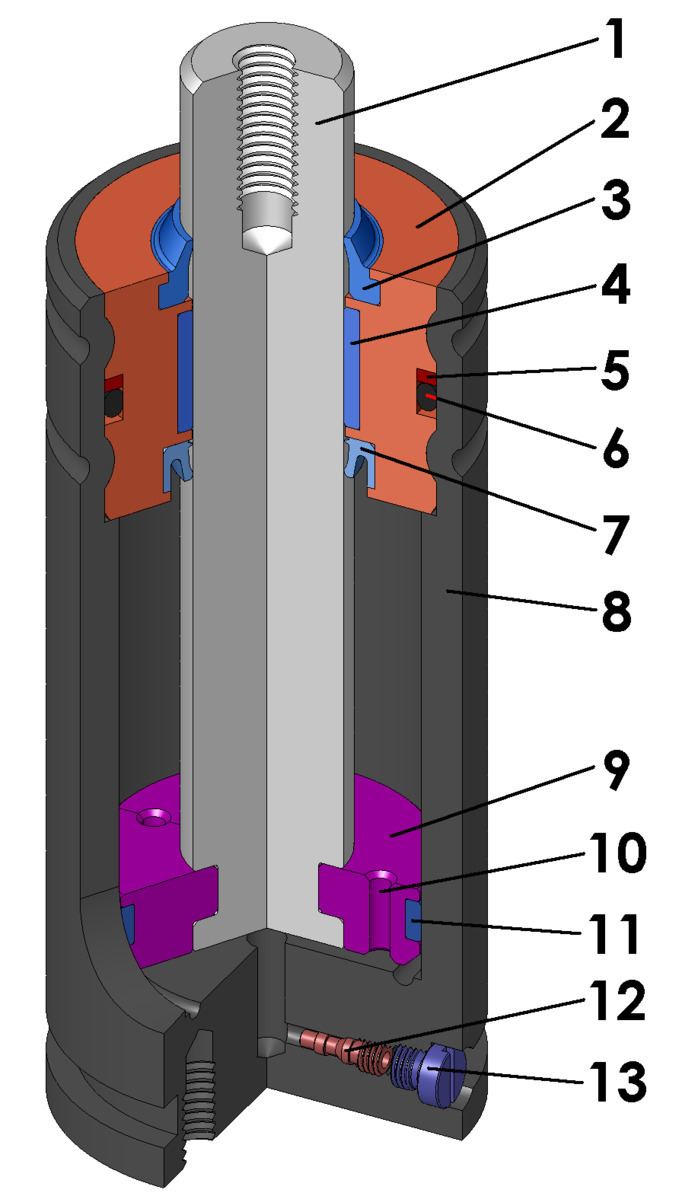 | ||
A gas spring is a type of spring that, unlike a typical metal spring, uses a compressed gas, contained in a cylinder and compressed by a piston, to exert a force.
Contents
Common applications include automobiles (where they are incorporated into the design of struts that support the weight of hatchback doors while they are open) and office chairs. They are also used in furniture, medical and aerospace applications. Much larger gas springs are found in machines that are used in industrial manufacturing (the press tooling industry), where the forces they are required to exert often range from 2500N to 400,000N (forty tonnes).
Types
Gas springs are manufactured in many varieties including:
Forms
If the internal plunger has a diaphragm which extends to the side of the gas tube, it will cease to move once an applied force is constant and will support a weight, like a normal spring. If a fine hole exists in the plunger, however, it is termed a "slow-dampened spring" and can be used on heavy doors and windows. A gas spring designed for fast operation is termed a "quick gas spring" and is used in the manufacture of air guns and recoil buffers.
Reducing the gas volume and hence increasing its internal pressure by means of a movable end stop, or allowing one tube to slide over another, can allow the characteristics of a gas spring to be adjusted during operation. The rod may be hollow by use of clever seals or may consist of multiple small-diameter rods. A small amount of oil is normally present.
The gas may be introduced by a Schrader-type valve, using a lip seal around the rod and forcing it to allow gas in by external overpressure or a shuttling O-ring system. Gas springs of high pressure contain a very large amount of energy and can be used as a power pack. In emergency use the gas may be introduced via a gas generator cell, similar to those used in airbags. Passive heave compensators features large gas springs. The stroke lengths can exceed 6 meter.
Features
A variety of features are available from various manufacturers:
